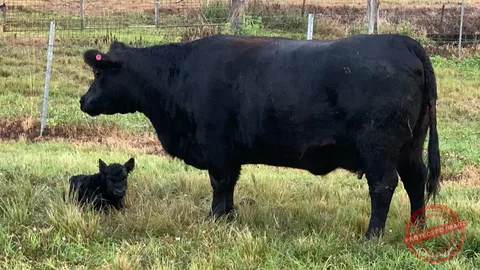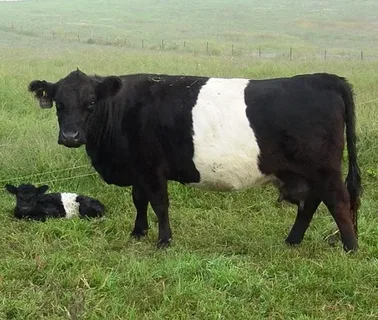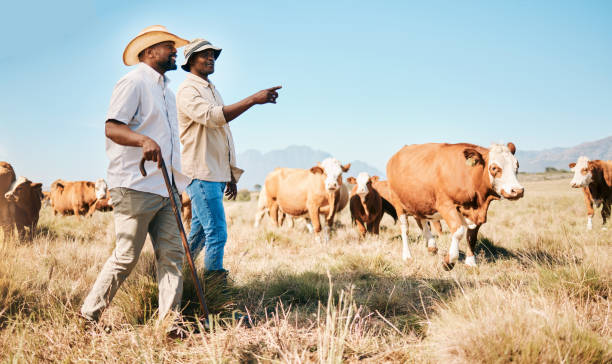There’s something about that first step into livestock ownership that feels both exciting and nerve-wracking. You’ve done the research, watched videos, and maybe even visited a few local farms. But when it comes to choosing your first cattle breed, the options can feel overwhelming. Angus, Hereford, Jersey—they all sound great until you start wondering about feed costs, fencing, or whether you can handle their size and temperament. That’s where Dexter cattle quietly steal the show.
Dexters might not be as massive or flashy as other breeds, but don’t let their compact size fool you. These small but mighty cattle are practical, intelligent, and adaptable. Whether you’ve got a few acres of land or a full homestead, Dexter cattle fit right in without demanding much more than good care, consistent feeding, and a bit of patience. I still remember the first time I brought a Dexter heifer home—she stepped off the trailer, sniffed around the pasture, and acted like she’d lived there her whole life. No drama. No trouble. Just calm curiosity.
If you’re looking for the perfect “starter breed,” Dexters are worth serious consideration. They’ve got the charm of a small breed, the productivity of a large one, and the temperament that makes them ideal for beginners. Let’s dig into ten solid reasons why Dexter cattle might just be the smartest livestock investment you can make.
10 Reasons Why Dexter Cattle are the Smart Choice for First-Time Livestock Ownership
Here are some of the reasons why you should choose Dexter cattle over breed of cattle;
1. Compact Size, Big Advantage
One of the first things people notice about Dexter cattle is their small stature. Adults stand around 36 to 44 inches tall and weigh between 600 to 1,000 pounds. That’s significantly smaller than your typical beef cow. Why does that matter? Because smaller means easier handling, lower feed costs, and less stress on your fences and facilities.
For new livestock owners, that size difference can mean the world. A Dexter won’t bulldoze through a gate or spook you with its sheer weight. They’re easier on your pastures too, making them perfect for small-acre farms or hobby ranches.
2. Triple-Purpose Breed
Dexters are one of the few true triple-purpose cattle breeds left: they provide meat, milk, and draft work. That kind of versatility is gold for a new farmer trying to get the most out of a small herd.
The beef is beautifully marbled, the milk rich in butterfat, and while not everyone needs a working ox these days, their strength and calm demeanor make them handy for light tasks. If you’ve ever dreamed of producing your own butter or raising grass-fed beef, a Dexter can handle both without compromise.
3. Gentle and Manageable Temperament
If you’re new to livestock, temperament matters more than you think. You don’t want a skittish animal that’s hard to move or milk. Dexter cattle are famously gentle, intelligent, and easy to train. They respond well to calm handling and quickly learn routines.
I’ve had Dexters follow me around the pasture like loyal dogs, waiting for a scratch behind the ear or a handful of fresh hay. They’re not aggressive or unpredictable, which makes working with them a genuine pleasure.
4. Excellent Grazers and Easy Keepers
Dexter cattle are efficient grazers. They make the most of rough pasture that larger breeds might turn their noses up at. Because of their size and efficient metabolism, they can thrive on less land and require less supplemental feed.
If you’ve got a modest plot and you’re wondering if it’s enough, chances are it is for Dexters. Just rotate their grazing areas regularly, and you’ll see how well they maintain both their health and your pasture quality.
5. Cost-Effective to Maintain
Raising large cattle can burn through your wallet quickly. Feed, fencing, and veterinary care all scale with the animal’s size. Dexters, however, keep costs much lower. They eat less, require smaller facilities, and rarely have serious health issues if well-managed.
Even the startup costs are lower. You don’t need heavy-duty equipment or reinforced fencing to keep Dexters happy. For a beginner trying to stay within budget, this alone is a game-changer.
6. Hardy and Adaptable
From hot summers to cold winters, Dexter cattle adapt impressively well. Originating from Ireland, they developed a resilience that helps them thrive in varying climates. Their thick coats protect them in winter, and their smaller size helps them stay comfortable when the temperatures rise.
They’re also less prone to calving difficulties, which is a huge relief for beginners. Smaller calves mean easier births and healthier cows, with less need for emergency intervention.
7. High-Quality Meat and Milk
Dexter beef has a rich, natural flavor that rivals premium cuts from larger breeds. It’s tender, juicy, and perfectly sized for family consumption. You won’t need an industrial freezer to store a Dexter quarter beef!
As for milk, Dexters are known to produce between 1.5 to 3 gallons a day, depending on diet and genetics. It’s high in butterfat, which means incredible cream, butter, and cheese. For homesteaders who want both milk and meat, that’s a win-win.
8. Easy Breeding and Calving
Many new livestock owners dread calving season. With some breeds, it’s a stressful, hands-on ordeal that keeps you awake all night. Dexter cows, though, are known for their ease of calving. Their small calves and wide pelvises make for smooth deliveries almost every time.
Even better, Dexters are good mothers. They clean, feed, and protect their calves instinctively. It’s rare to need to bottle-feed or assist with nursing, which means less worry for beginners.
9. Perfect for Small Farms and Homesteads
You don’t need hundreds of acres to raise Dexter cattle successfully. Many families keep one or two for personal milk or meat production, while others manage small herds on just a few acres.
They integrate well with other animals too—sheep, goats, and poultry—without causing chaos. Their calm temperament makes mixed-species grazing much easier to handle, especially when you’re still learning the ropes of farm management.
10. Longevity and Strong Genetics
Dexters live long, productive lives, often breeding and producing well into their teens. That means a good investment in one or two cows can pay off for many years. They’re also known for maintaining fertility and body condition longer than most cattle breeds.
Their genetics are strong, thanks to careful preservation by breeders dedicated to keeping the breed’s traditional qualities intact. It’s no wonder more small-scale farmers are turning to Dexters as a sustainable choice for the long haul.
Understanding Dexter Cattle Disadvantages
Now, let’s be honest—no breed is perfect. There are a few Dexter cattle disadvantages to be aware of before diving in. For one, their smaller size means lower overall beef yield compared to larger breeds. If your goal is purely commercial beef production, that might be a drawback.
Another issue is availability. In some areas, finding quality breeding stock can take time or require travel. Some Dexters can also carry a genetic condition called chondrodysplasia (dwarfism), so it’s important to buy from responsible breeders who test their animals.
Finally, their milk production, while high-quality, is modest compared to specialized dairy breeds. But for most small farmers, the balance of size, temperament, and versatility still makes Dexters an unbeatable choice.
How to Start Raising Dexter Cattle
Step 1: Research and plan your setup.
Know your land capacity, fencing, and water sources before bringing home your animals.
Step 2: Find a reputable breeder.
Look for registered Dexter cattle with health testing for known genetic conditions.
Step 3: Start small.
Two or three animals are plenty for a first-timer. You’ll learn faster without feeling overwhelmed.
Step 4: Track everything.
Keep notes on breeding, calving, and feed schedules. A free cattle record keeping spreadsheet is a great tool for beginners—it helps you stay organized without investing in fancy software.
Step 5: Learn from other farmers.
Join local Dexter associations or online groups. Experienced owners are often more than willing to share advice and stories that you can learn from.
FAQs About Dexter Cattle
Are Dexter cattle good for beginners?
Yes! Their calm nature, small size, and low maintenance make them ideal for first-time livestock owners.
Can you milk Dexter cows daily?
Absolutely. Most Dexters can be hand-milked easily and provide enough for a small family.
Do Dexters need special feed?
No. They thrive on good pasture and hay, with occasional supplements depending on the season.
How many acres do you need for a Dexter?
Roughly one to two acres per animal, depending on pasture quality and your grazing system.
Can Dexter cattle be profitable?
Yes. Many farmers raise them for direct-to-consumer beef or as homestead dual-purpose cattle.
A Final Thought from One Farmer to Another
If you’re standing at the starting line of your livestock journey, Dexter cattle just make sense. They’re friendly, tough, affordable, and endlessly rewarding to raise. You’ll learn a lot, make a few mistakes, and find a rhythm that suits both you and your herd.
There’s nothing quite like walking out at sunrise and seeing your Dexters grazing quietly, dew glistening on their coats, knowing you made the right choice. Ready to take that first step into livestock ownership with confidence?



